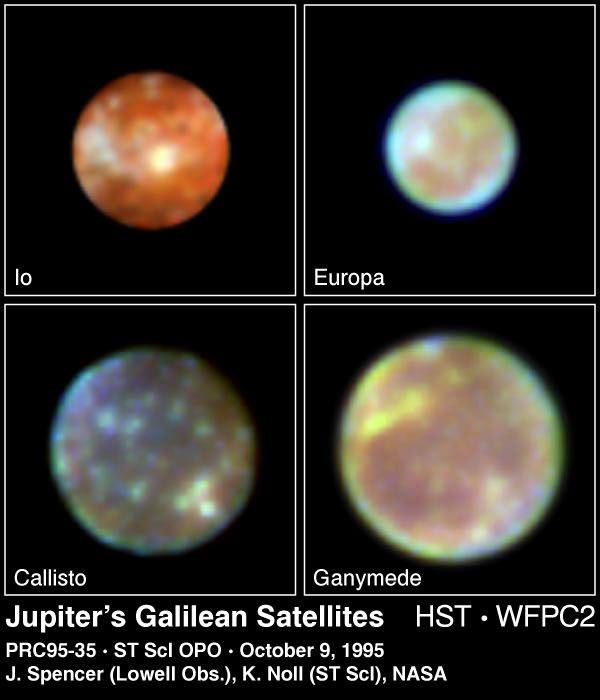1 min read
Hubble Photo Gallery of Jupiter’s Galilean Satellites

This is a Hubble Space Telescope "family portrait" of the four largest moons of Jupiter, first observed by the Italian scientist Galileo Galilei nearly four centuries ago. Located approximately one-half billion miles away, the moons are so small that, in visible light, they appear as fuzzy disks in the largest ground-based telescopes. Hubble can resolve surface details seen previously only by the Voyager spacecraft in the early 1980s. While the Voyagers provided close-up snapshots of the satellites, Hubble can now follow changes on the moons and reveal other characteristics at ultraviolet and near-infrared wavelengths.
Over the past year Hubble has charted new volcanic activity on Io's active surface, found a faint oxygen atmosphere on the moon Europa, and identified ozone on the surface of Ganymede. Hubble ultraviolet observations of Callisto show the presence of fresh ice on the surface that may indicate impacts from micrometeorites and charged particles from Jupiter's magnetosphere.
Hubble observations will play a complementary role when the Galileo spacecraft arrives at Jupiter in December of this year.
- Object NameObject NameA name or catalog number that astronomers use to identify an astronomical object.Jupiter, Io, Europa, Ganymede, Callisto
- Release DateOctober 10, 1995
- Science ReleaseHubble Photo Gallery of Jupiter’s Galilean Satellites
- Credit
Share
Details
Claire Andreoli
NASA’s Goddard Space Flight Center
Greenbelt, Maryland
claire.andreoli@nasa.gov






























